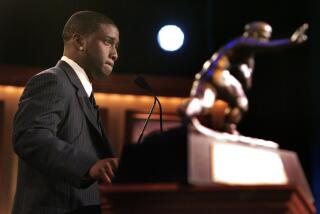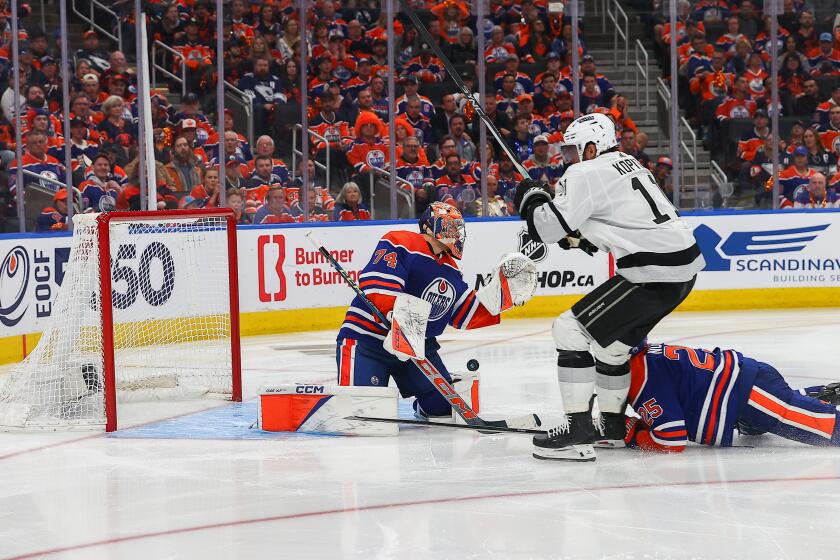When reality hit the canvas in the wrestling ring of life
The minister who didn’t practice what he preached. The superstar ballplayer who wasn’t content just to ingest sunflower seeds. The politician who pontificated but didn’t pay his taxes. The investment manager who bilked friends out of millions.
How many more hits can we take? Beats me; ask Michael Phelps.
It can’t be good for the psyche to see so many glorified figures portrayed as flawed or fraudulent characters. Makes you wonder whom you can trust, what you can trust. What, exactly, is real out there?
Sadly for some of us, this isn’t our first painful lesson in disillusionment. The first came years ago. And no, I’m not talking about Santa Claus.
I’m talking about discovering that something in which you believed, even in the face of doubters, wasn’t real. It was about coming to grips with the fact that this world isn’t always what it seems and that you can’t always trust what you see and hear.
It’s called the painful truth.
And after you’ve accepted that truth, which I finally did as a teenager, you’d think it would be hard to be fooled again.
You’d think.
I loved professional wrestling.
When I was a kid in Omaha, my dad would drop me off for the evening at Civic Auditorium downtown. There’d always be several matches, with the main event often for the world championship. I thought it was pretty cool that otherwise ordinary Omaha hosted so many world championship events. Looking back now, I suppose I should have been suspicious that dad never stuck around to watch the matches. I wonder where in the heck he went. How could he pass up midget tag-team wrestling for the world title?
This was Omaha in the early and mid-1960s, when young kids believed what they were told. When people who were presented as professionals and the best in their field were seen by young boys as the real deal.
Verne Gagne was the world champion then -- at least on the Omaha circuit -- and he appeared as respectable and truthful as any Wall Street banker.
When I’d see Gagne on TV, giving interviews, he was the essence of sportsmanship and grace.
Fake? No way. When Gagne put the sleeper hold on an opponent, nobody could fake going unconscious.
At least, not to a 13-year-old who probably didn’t have a very good seat in the auditorium.
What a cast of characters. In the ring, you learned to separate good from evil. Gagne was good, Mad Dog Vachon was bad. Cowboy Bob Ellis was a gentleman; Dick the Bruiser was a bully.
Gagne was relatively small for a wrestler, and I have a recollection of fearing for his safety when he got in the ring with Don Leo Jonathan, who was in the ballpark of 300 pounds. But because good triumphed over evil in those days, Gagne won.
Everybody went home happy. They bought the act.
Just as many of us bought into a bulletproof housing market in Southern California and a stock market that might slow down but could never be stopped.
What’s the difference, really, between a flying dropkick and a multi-leveraged subprime loan? They’re both maneuvers pulled off by highly trained professionals, right?
If Mad Dog Vachon gouged a guy’s eyes and then bit him, of course blood would flow. You can’t fake a stream of blood, especially to a kid in the 23rd row.
If Bernie Madoff told his investors that, boy, did he have a deal for them, why not believe him? After all, the man delivered the goods.
When an investment firm is making hundreds of millions and people fawn over them, who wants to be the cynic? If the Dow hits 14,000 amid an incredible run-up, who wants to cry “Fake!” and ruin a good time?
I got educated for the first time sometime in the late 1960s.
I probably should have known better by then, being a college kid and all, but one of the more despicable villains was Baron von Raschke. He was loathed.
A few years later, somebody told me the Baron was Jim Raschke, who had gone to North High School in Omaha.
Oh.
Barons of the ring. Barons of finance. Barons of baseball.
They put on a terrific show, don’t they?
--
More to Read
Get our high school sports newsletter
Prep Rally is devoted to the SoCal high school sports experience, bringing you scores, stories and a behind-the-scenes look at what makes prep sports so popular.
You may occasionally receive promotional content from the Los Angeles Times.






